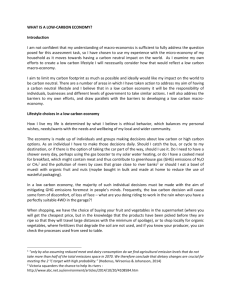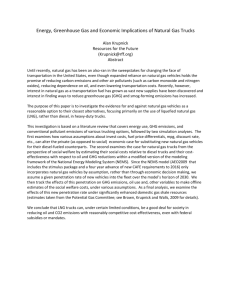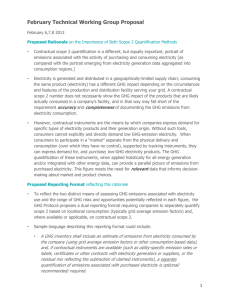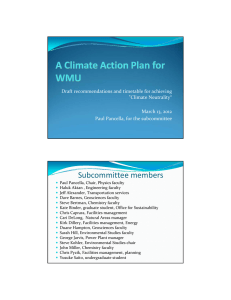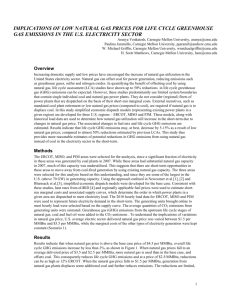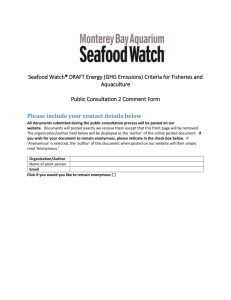Energy
advertisement
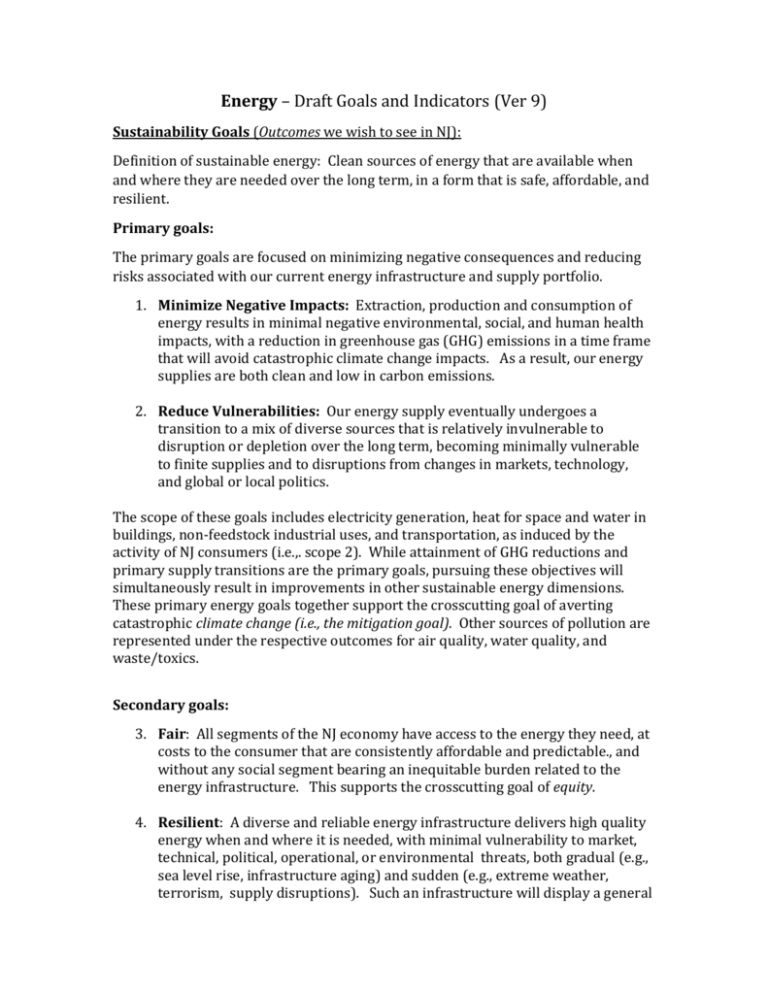
Energy – Draft Goals and Indicators (Ver 9) Sustainability Goals (Outcomes we wish to see in NJ): Definition of sustainable energy: Clean sources of energy that are available when and where they are needed over the long term, in a form that is safe, affordable, and resilient. Primary goals: The primary goals are focused on minimizing negative consequences and reducing risks associated with our current energy infrastructure and supply portfolio. 1. Minimize Negative Impacts: Extraction, production and consumption of energy results in minimal negative environmental, social, and human health impacts, with a reduction in greenhouse gas (GHG) emissions in a time frame that will avoid catastrophic climate change impacts. As a result, our energy supplies are both clean and low in carbon emissions. 2. Reduce Vulnerabilities: Our energy supply eventually undergoes a transition to a mix of diverse sources that is relatively invulnerable to disruption or depletion over the long term, becoming minimally vulnerable to finite supplies and to disruptions from changes in markets, technology, and global or local politics. The scope of these goals includes electricity generation, heat for space and water in buildings, non-feedstock industrial uses, and transportation, as induced by the activity of NJ consumers (i.e.,. scope 2). While attainment of GHG reductions and primary supply transitions are the primary goals, pursuing these objectives will simultaneously result in improvements in other sustainable energy dimensions. These primary energy goals together support the crosscutting goal of averting catastrophic climate change (i.e., the mitigation goal). Other sources of pollution are represented under the respective outcomes for air quality, water quality, and waste/toxics. Secondary goals: 3. Fair: All segments of the NJ economy have access to the energy they need, at costs to the consumer that are consistently affordable and predictable., and without any social segment bearing an inequitable burden related to the energy infrastructure. This supports the crosscutting goal of equity. 4. Resilient: A diverse and reliable energy infrastructure delivers high quality energy when and where it is needed, with minimal vulnerability to market, technical, political, operational, or environmental threats, both gradual (e.g., sea level rise, infrastructure aging) and sudden (e.g., extreme weather, terrorism, supply disruptions). Such an infrastructure will display a general robustness, as well as reduced vulnerability to climate-related risks. This supports the crosscutting climate change resilience goal. 5. Safe: Extraction, production and consumption of energy results in minimal risk to human health and welfare. These goals are aligned with strategic objectives established in the New Jersey Energy Master Plan. Indicators & Targets Indicators for primary goals: 1. GHG emissions (also a climate change mitigation indicator) Measurement Method: Level of all energy-related GHG emissions induced by consumption within the state (scope 2), including electricity generation, heating of space and water, non-feedstock industrial uses, and transportation, in tons of CO2 equivalent. Absolute value and trend. Target: Reduction to 1990 levels statewide by 2020 and a reduction to 80% below 2006 emission levels by 2050, as motivated by NJ’s Global Warming Response Act1. Data source: bottoms up GHG inventory for the state. 2. Primary supply transition: Measurement Method: Percentage of total energy consumed that is derived from fossil fuel based primary sources (on an energy basis), including electricity generation, heating of space and water, nonfeedstock industrial uses, and transportation. Target: no more than 20% of total energy consumption depends upon fossil fuel sources by 2050. This target is aligned with overall Global Warming Response Act timeline. Data source: US Energy Information Administration fuel consumption data for New Jersey. Indicators for secondary goals: 3. Fairness Indicator - Affordability (an equity indicator): Measurement Methodology: fraction of residential and commercial budgets spent on energy. Absolute and trend. 1 The GWRA mandates an overall 80% reduction in CO2, and for purposes of this goal setting system, we assume that all CO2 contributing sectors equitably achieve an 80% reduction within their sphere of influence. Hence the 80% goal for energy-related emissions. Target: retail energy expenses in all socio-economic segments, net of any subsidies2, are below 6% of total expenses, including electricity and onsite fuel consumption combined. Data Source: NJ Rate Counsel, EIA, BPU 4. Resilient Indicator #1 – Technical Availability: Measurement Methodology: Number of customer-hours (for heat and electricity) needed energy is available to the end consumer, in the quantity and quality needed, as a fraction of annual total, regardless of reason for failure. Resiliency is intended to include a wide array of vulnerability factors (market risks, technical failures, etc). Note that these measures of resiliency can be increased by either strengthening public infrastructure, or increasing the ability of customers/sites to operate independently. Target: Above 99.99% (reference source??). Data source: Utilities and BPU. 5. Resilient Indicator #2 – Vulnerability (a climate reslience indicator): Measurement Methodology: A proactive, predictive measure of the probability of the energy infrastructure failing due to climate change related factors (flooding, extreme weather, changes in water supply, etc). Target: as low as possible. More research needed, possibly multiple indicators. 6. Safe: Measurement Methodology: Physical measure of all harmful energy emissions or wastes, and energy related public health and safety incidents. Absolute and trend. Target: More research needed, possibly multiple indicators. In other words, this target could be met either by low cost energy or by subsidizing low-income consumers. 2
